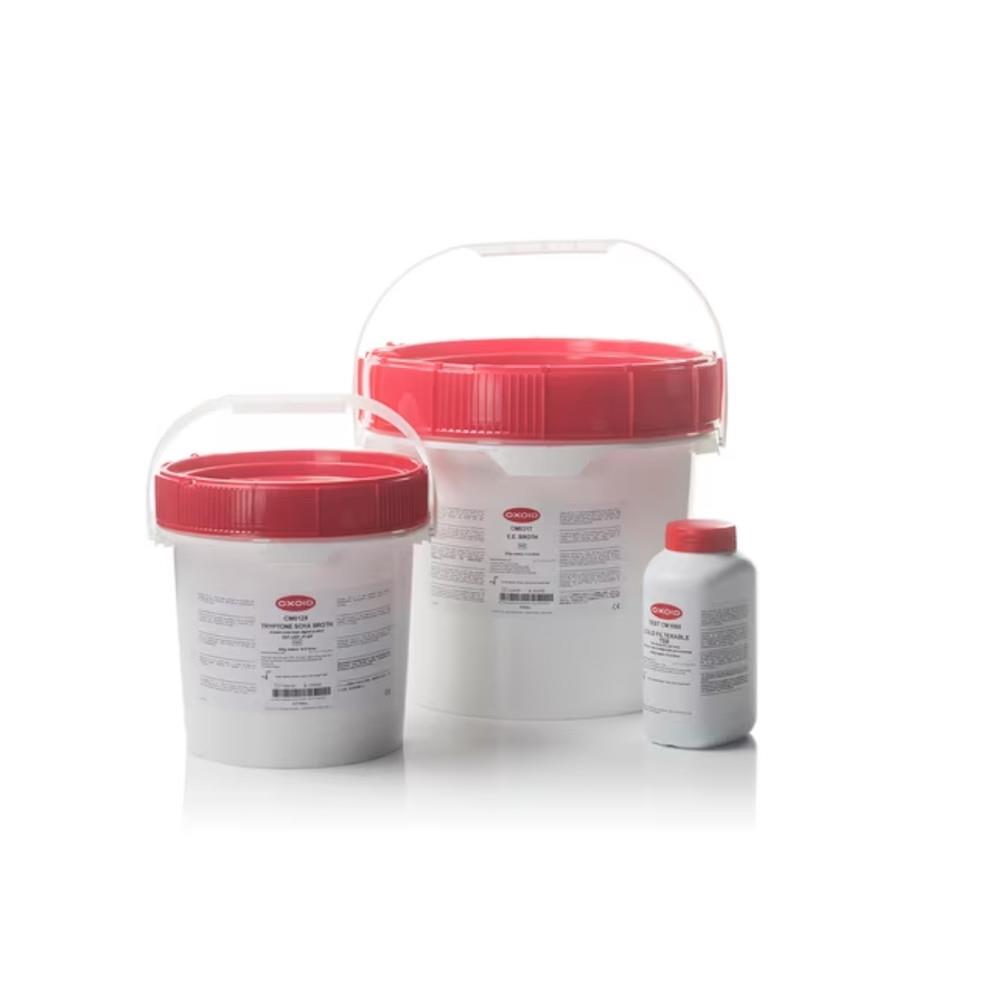Thermo Scientific™ Oxoid™ Alkaline Peptone Water
Catalog No :
CAS Number :
Brand :
In Stock
for selective recovery and enrichment of Vibrio species
Specifications:
| Application | Microbiology | ||
| Storage Temperature | Ambient | ||
| Product Type | Culture Medium | Forms | Powder |
| Product Brand | Oxoid | ||
| Product Grade | Microbiology grade | ||
The Thermo Scientific™ Oxoid™ Alkaline Peptone Water (CM1028) is a specialized enrichment medium designed for isolating Vibrio species, including Vibrio cholerae, from various sources such as food, water, and clinical samples. Here is a summary based on the provided details:
Key Characteristics:
- Primary Use: Non-selective enrichment of Vibrio spp., including Vibrio cholerae.
- Typical Formula:
- Peptone: 10.0 g/l
- Sodium Chloride: 20.0 g/l
- pH: 8.6 ± 0.2 at 25°C
- Preparation Instructions: Dissolve 30 g of the medium in 1 liter of distilled water, mix thoroughly, distribute into containers, and sterilize at 121°C for 15 minutes.
Description and Functionality:
- The medium's alkalinity selectively promotes the growth of Vibrio species while suppressing unwanted flora.
- Sodium chloride (2%) supports the optimal growth of halophilic Vibrio species.
- Can be used for:
- Direct enrichment from swabs, fecal samples, food, or water.
- Microscopic examination using the hanging drop method.
Applications:
- Clinical Samples:
- Swab or 1g of fecal specimen inoculated directly.
- Incubation:
- 35-37°C for 5-6 hours or
- 18-20°C for 18-20 hours.
- Food and Water Samples:
- Follow standards like APHA, FDA-BAM, or ISO methods.
- Post-incubation, streak onto selective media such as:
- TCBS Agar (CM0333)
- MacConkey Agar (CM0007)
Observation and Biochemical Confirmation:
- Typical colony characteristics on plating media:
- TCBS Agar: Yellow colonies (V. cholerae) or blue-green colonies (V. parahaemolyticus).
- MacConkey Agar: Colorless colonies for lactose-negative Vibrio spp.
- Biochemical confirmation:
- Oxidase-positive reaction.
- Fermentation of glucose (acid production).
Storage and Shelf Life:
- Dehydrated Medium: Store at 10-30°C; ensure use before the expiry date.
- Prepared Medium: Store at room temperature for up to 1 month.
Quality Control:
- Positive Controls: Growth in the form of turbidity.
- V. parahaemolyticus ATCC® 17802
- V. vulnificus ATCC® 29307
- V. furnissii ATCC® 11218
- Negative Control: No changes observed in uninoculated medium.
Appearance:
- Dehydrated Medium: Straw-colored, free-flowing powder.
- Prepared Medium: Clear, straw-colored liquid.
This medium is a valuable tool for microbiologists in the identification and enrichment of pathogenic Vibrio species, providing consistent and reliable results when used alongside standard testing protocols.
References:
- Shread, P., Donovan T.J., and Lee J.V. (1991) Soc. Gen. Microbiol. Q. 8:184.
- Cruickshank, R. (1968) Medical Microbiology. 11th ed. Livingstone Ltd, London, UK.
- Janda J.M., et al. (1988) Current Perspectives on the Epidemiology and Pathogenesis of Clinically Significant Vibrio spp. Clinical Microbiology Reviews July 3:245-267.
- Standard Methods for the Examination of Water and Waste Water 20th Edition 1998 APHA.
- Compendium of Methods for the Microbiological Examination of Foods, Fourth Edition 2001, APHA.
- FDA BAM on line 2001 FDA BAM.
- Methods for Microbiological Examination of Food and Animal Feeding Stuffs Part 14 Detection of Vibrio parahaemolyticus. BS5763: Part 14:1991 ISO 89.




 0
0
